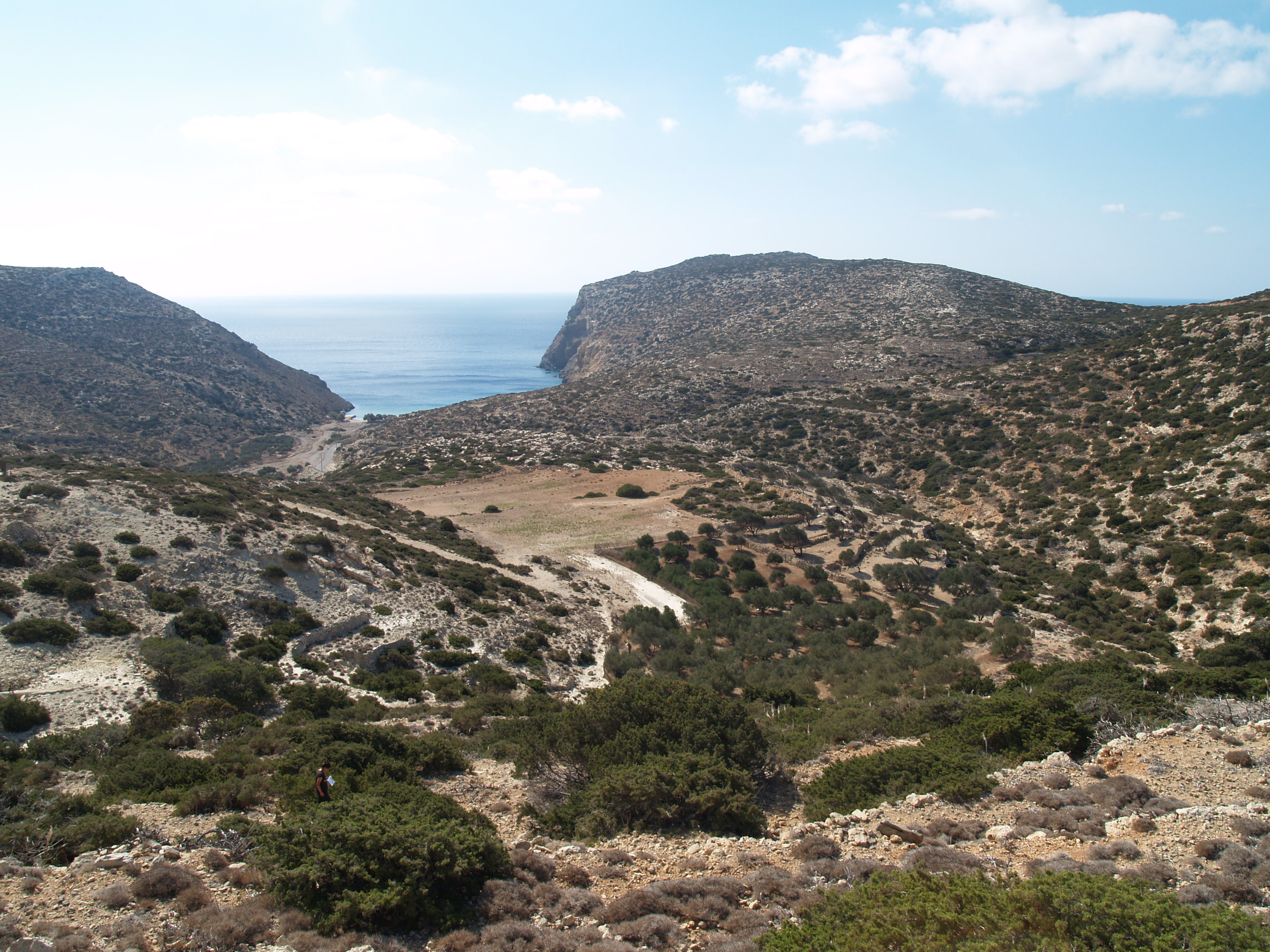Giorgos Mastropavlos : A journey into Ancient Kassos

The young archeologist Giorgos Mastropavlos is about to discover the acient secrets of Kasos. His PhD allows him to travel back in time to the roots of this Greek island.
Giorgos always begins a conversation with a smile on his face. You can see how much he enjoys speaking about his passion — and that enthusiasm is undeniably contagious. His tanned skin immediately suggests that he spends a lot of time outdoors, doing research. Holding a hand-rolled cigarette, he starts to speak. His voice is cheerful and rhythmic, and is taking you to a travel back in time. The young archaeology PhD student is passionate about the prehistoric archaeology. For his work, he has returned to the place where he spent many of his childhood summers: his father’s birthplace – Kassos.
His love and passion for archaeology were already solidified during his school years. One summer in Kassos, he read The Alexander Cipher and was immediately fascinated by the main character – an archaeologist. From that moment on, he knew what he wanted to do in life. Now that he has returned to Kassos he’s very happy: „It was a great circle, because it started from reading a book here and now I’m doing my PhD about the island of Kassos.”
.jpg)
He found his way back to Kassos during his military service, when he had the opportunity to explore the island. This time, however, not as a curious child on summer vacation, but as a well-read archaeology student. Historically, much was already known about ancient Kassos, but there was hardly any information about archaeological findings. Ideas for his dissertation began to take shape in his mind.
Historians place past events in context primarily through written sources, while archaeologists work with material remains. On Kassos – specifically in Chelatros Bay (Image 1) – Giorgos found mainly pottery shards. “It’s always pottery,” he jokes. “It’s non-destructive material.” These include many everyday household items, such as drinking vessels (Image 2), storage and transport containers, but also parts of ancient beehives (Images 3 and 4) – because yes, even back then people ate honey. Strabo, a geographer from the 1st century BC, wrote that the honey from the Dodecanese islands was particularly good and according to him, it still is.
"I think that when we're lookin at the events, the person, the phenomena in the distance of time, we can judge without being biased."
A special sparkle comes to his eyes as he speaks about his favorite find: a piece of fishing gear. He discovered two stones that were once part of a fishing net. In the past, people would tie heavy stones to the bottom of the net and attach lighter stones to the top so they would float on the water’s surface. This made it possible to cast the nets further out to sea before fishing. Listening to Giorgos, you feel like being taken back to ancient times, as if you were throwing out the net with your own hands.
But the island holds even more treasures – what exactly, he will find out in the coming years. No matter where you are on the island, ancient remnants can be found – for example, terraced walls (Image 6). These are scattered across the island, and not all of them date back to antiquity. It is often difficult to determine their age. Giorgos mainly uses the size of the stones as an indicator – the larger the stones, the older the wall.

Kassos was an independent region that produced its own pottery and also sought contact with other regions: „They wanted to be in contact with the outside world and to Crete specifically.“ This is shown by the discovery of Minoan artifacts.
In our conversation with Giorgos, it quickly became clear how enthusiastic he is about his work – not just because of the finds, but above all because of what history can teach us: „Science is about past human activity. I think that when we’re looking at the events, the person, the phenomena in the distance of time, we can judge them without being biased. If we’re open-minded, we can use them for the future in order to understand why people are reacting as they react – to make the right choices.“
Text : Julia Gaul, George Rampotas
Photos : George Rampotas, Giorgos Mastropavlos
